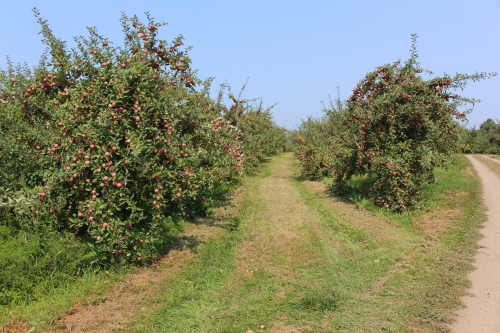
The trees are loaded at Green Mountain Orchards in Putney, Vermont, although McIntosh will not be ready for picking until next week. (Russell Steven Powell photo)
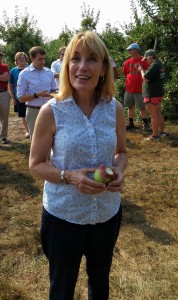
New Hampshire Gov. Maggie Hassan enjoys an apple at Mack’s Apples in Londonderry, where she read her proclamation officially recognizing September as New England Apple Month. (Bar Lois Weeks photo)
NEW HAMPSHIRE Gov. Maggie Hassan, Rhode Island Chief of Agriculture Ken Ayars, Massachusetts Commissioner of Agriculture John Lebeaux, Massachusetts State Senator James Eldridge, and Jim Bair, president of USApple, were among the officials visiting orchards Wednesday and Thursday to officially launch the 2015 New England apple harvest.
Many varieties of apples will be available for picking this Labor Day Weekend, including McIntosh, Gala, and Cortland at a number of orchards. Ripening times vary from orchard to orchard, so always call ahead to find out what is available.
Here are a few scenes from New England Apple Day from around the region.
Time to get picking!
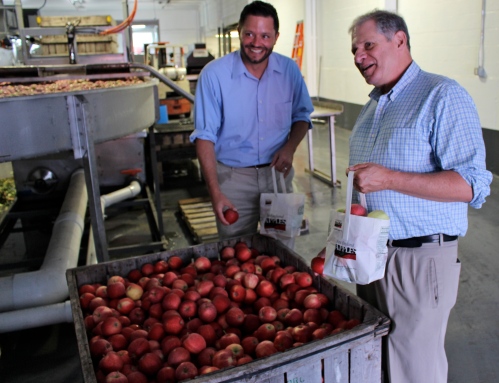
Massachusetts Commissioner of Agriculture John Lebeaux, right, and Assistant Commissioner Jason Wentworth grab some apples while touring the new packing line at J. P. Sullivan Co., in Ayer. Commissioner Lebeaux earlier presented Fairview Orchards Manager Sean O’Neill with a proclamation from Gov. Charles Baker naming September New England Apple Month. (Russell Steven Powell photo)
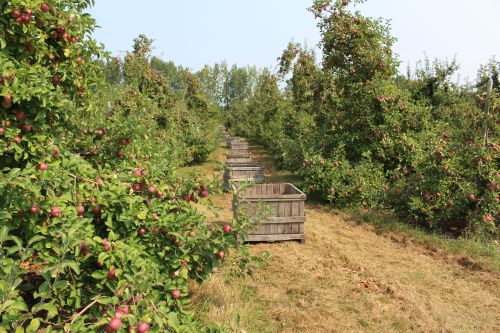
Fairview Orchards in Groton, Massachusetts, is already picking Galas, and will begin harvesting these McIntosh next week. (Russell Steven Powell photo)
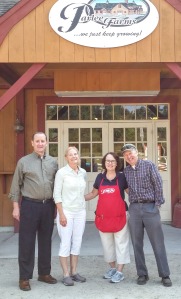
L to R: Jim Bair, president of USApple, Bar Lois Weeks, executive director of the New England Apple Association, and Ellen and Mark Parlee pf Parlee Farms in Tyngsboro, Massachusetts.
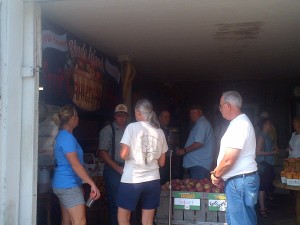
Rhode Island Chief of Agriculture Ken Ayars took this photo of the crowd gathered at Steere Orchard in Greenville.
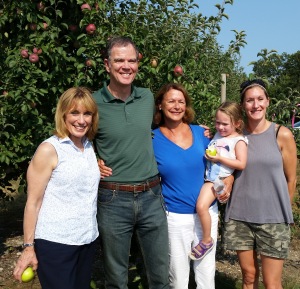
L to R: New Hampshire Gov. Maggie Hassan, owners Andrew Mack Jr., Nancy, Zoey, and Cindy Mack of Mack’s Apples in Londonderry. (Bar Lois Weeks photo)
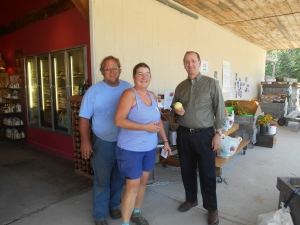
Owners Chuck and Diane Souther of Apple Hill Farm in Concord, New Hampshire, with Jim Bair, president of USApple. (Bar Lois Weeks photo)
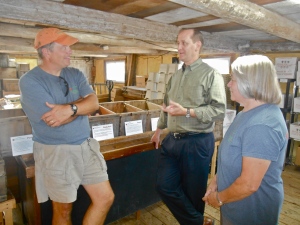
Owner Tim Bassett and store manager Wendy Hsu of Gould Hill Orchards in Contoocook, New Hampshire, listen as USApple President Jim Bair discusses the current crop. (Bar Lois Weeks photo)
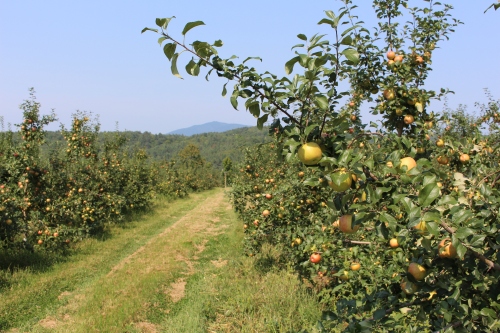
The Honeycrisp are plentiful at Wellwood Orchards in Springfield, Vermont. They will not be ready for picking for another week or so, but Wellwood will be picking Macs and Cortlands this weekend. (Russell Steven Powell photo)
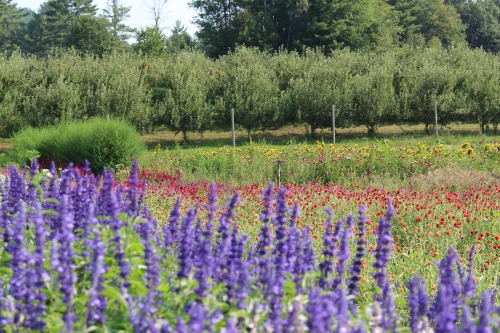
Visitors pass through a field of flowers en route to the pick-your-own orchard at Riverview Farm in Plainfield, New Hampshire. (Russell Steven Powell photo)
* * *
The following four-minute video has tips about how to prepare for your visit to a New England pick-your-own orchard:







